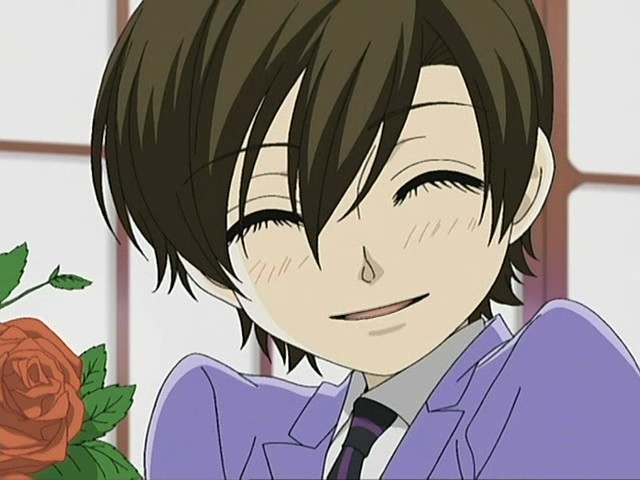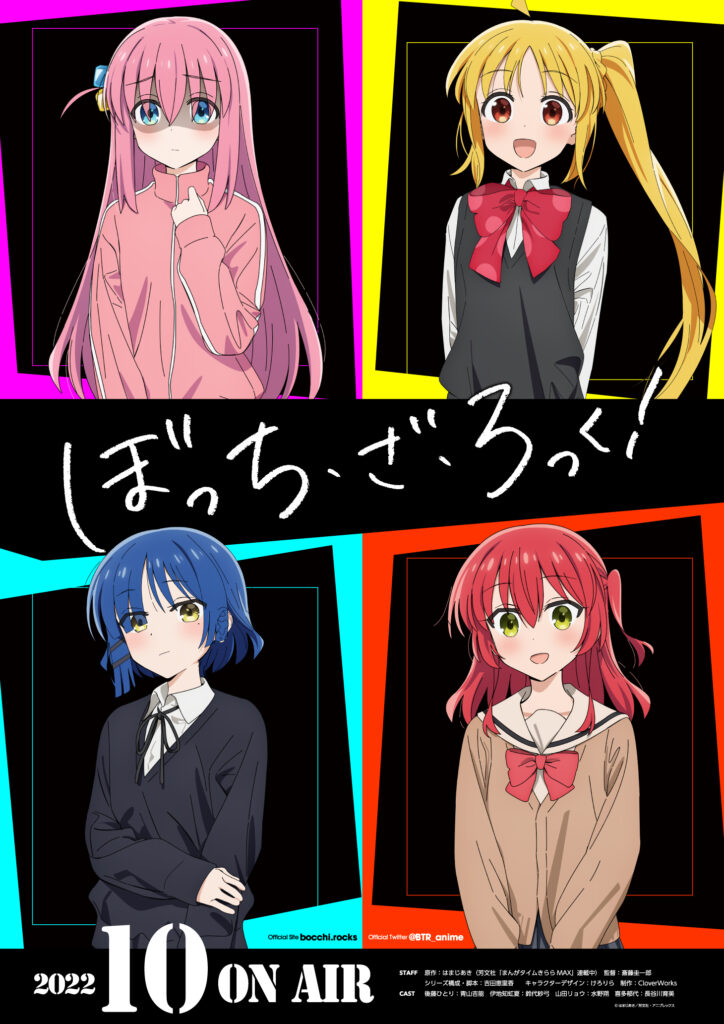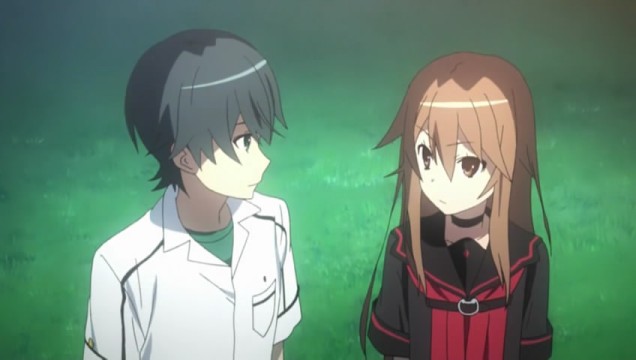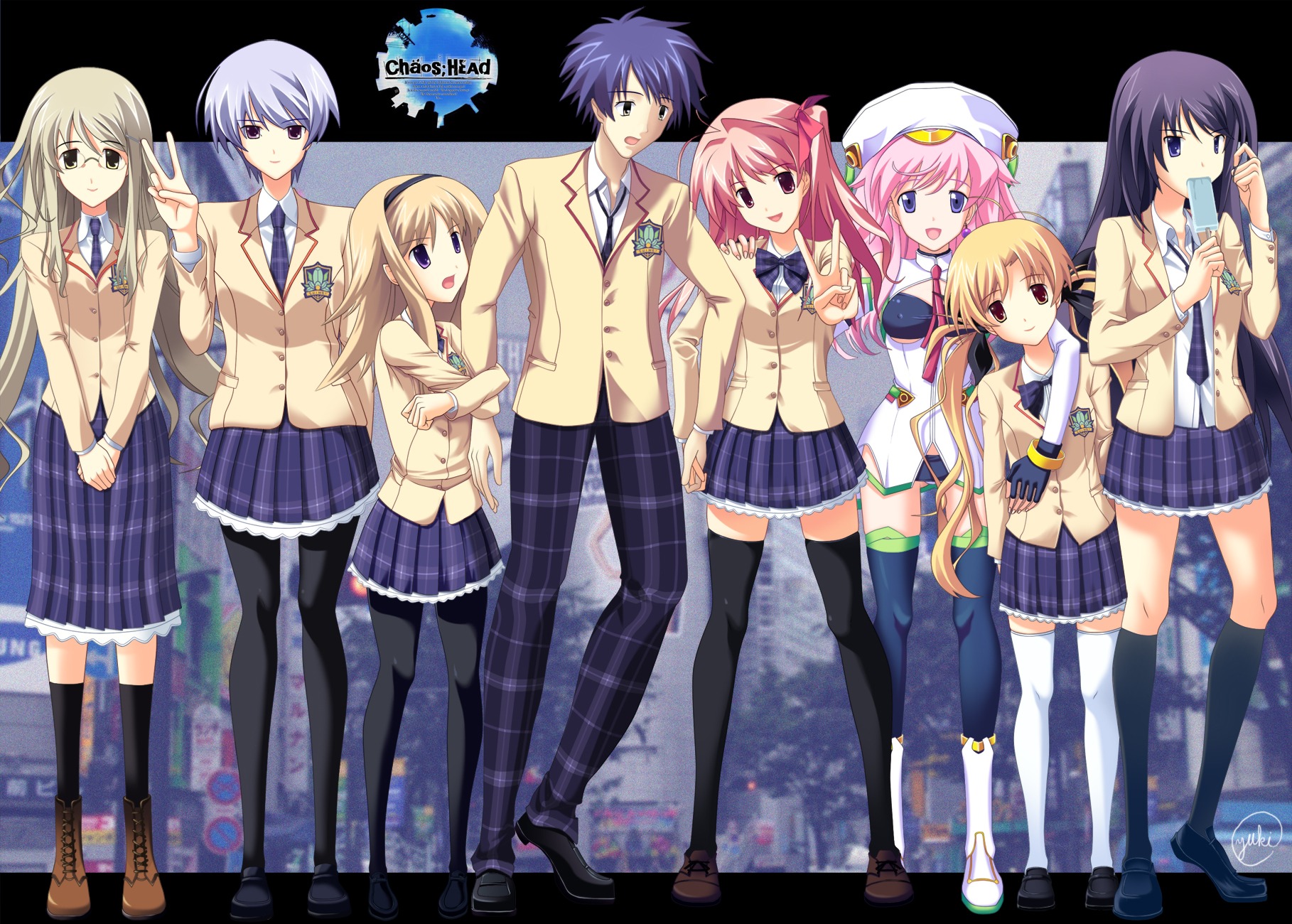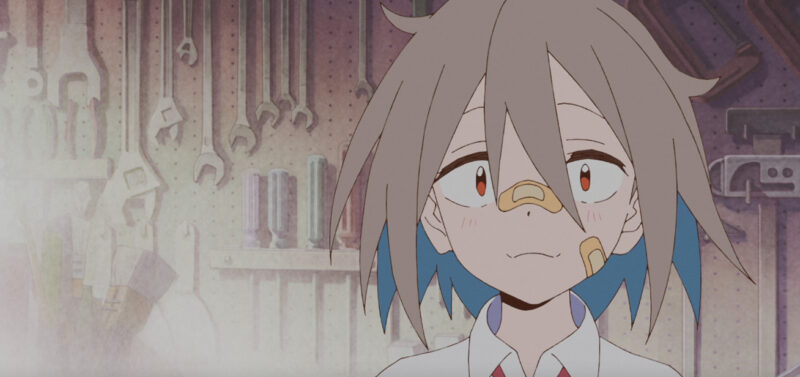
Do It Yourself! is another cute-girls-doing-cute-things anime. In this one, the girls join a Do It Yourself Club. The main character, Serufu Yua is a complete klutz and gets hurt just walking across the street. But her heart and willingness to try and improve no- matter-how-many-bandages-she-earns inspires the other girls. The other members of the DIY club includes official and unofficial members, such as Serufu’s childhood friend Miku and Kokoro, to official members Rei, Takumi, and exchange student Juliet.
Similar to Bocchi the Rock! each of the girls bring a set of skills and problems to the club. Rei, as the club president, is capable and friendly but a little aloof at first. Serufu is creative and artistic but she can’t hammer a nail straight. Miku worries about social perception and “slumming it” with Serufu and the other girls from the lower-class school neighboring hers. Takumi isn’t good at DIY stuff, but she’s skilled at sewing and detail work. She’s quiet where Kokoro is loud and go-get-em. Kokoro is good at the heavy-lifting stuff. Finally, exchange student Juliet struggles with cultural differences and making friends along with over-selling her skills.
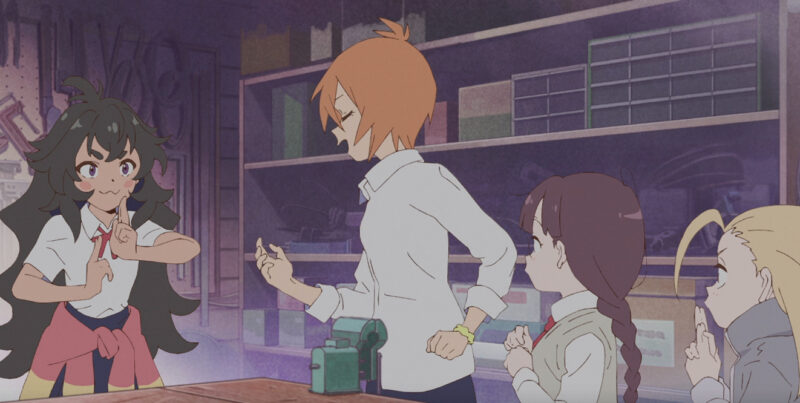
Don’t expect major conflicts here. Do It Yourself! is a healing anime at its core. It lavishes frames on the characters using hand tools, to give you an idea of its focus. The animation itself made me think of Little Witch Academia’s art style. The simple character designs created dynamic and fluid pose animation with a lot of personality. Serufu especially shines in her injury scenes. This simplified style doesn’t shine in still-frames, but when you see it in motion, you can see the advantages simplified designs offer for animation quality. There’s a liveliness to it that captures the liveliness of the DIY girls. Contrast this to Raven of the Inner Palace. Both animation styles serve their stories. Do It Yourself! wouldn’t work as it does with Raven’s stiffer, detailed style. Likewise, Raven’s seriousness just wouldn’t work with the simplified style of DIY. I’ve seen anime where the animation mismatches what the story demands. Either the animation overshadows the story, or the animation can’t lift what the story needs it to lift. The lifting problem often hurts action-focused anime.
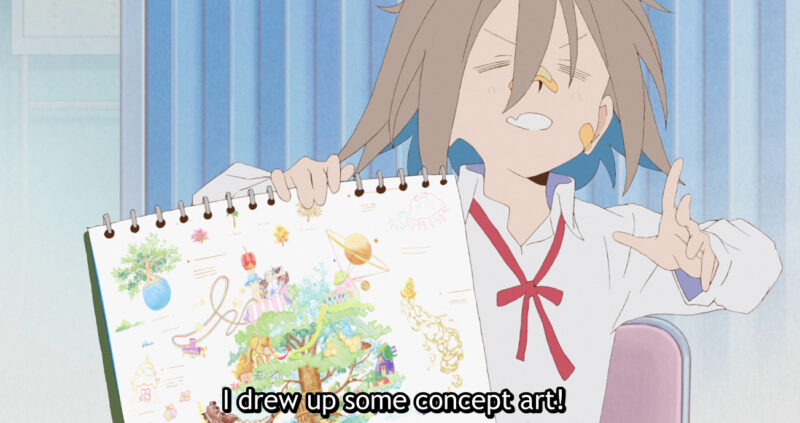
As for Do It Yourself!’s central problem: the girls want to build a tree house for the club but lack the funds to do it. So they get creative and build things to sell and gather lumber left-overs. Each girl works to build her skills in the process with Serufu working extra hard to pull her own weight. Her dreaminess and klutziness provides the central character arc, but it doesn’t go the direction you’d think. I can’t say anything else without spoiling her arc. Each of the girls have their own personal development stories that link into those of the other characters, similar to Bocchi. Anime likes the idea of knives sharpening each other. As you can imagine, the theme of friendship unites all of these arcs. This is a healing anime, after all.
Unlike many high-school anime, in Do It Yourself! adults and parents play important roles. Rei’s parents own and run the local Waku Waku Wan Wan hardware store. This provides a good source for their lumber scraps and provides a place for the DIY club to sell their fundraiser items. Rei’s father appears frequently in a supporting role; her mother is busy at the store but also appears. Serufu’s family, particularly her mom, play critical support roles for Serufu and for Miku. Serufu’s mom is as daydreaming and off-world as Serufu, but her welcoming support for all the girls offers a cornerstone for them. Miku’s mother is largely absent, but she too supports Miku and Juliet if from a distance. Juliet, as an exchange student, suffers the most from the absent parent syndrome of anime. In her case it makes sense and she finds foster parents in Miku’s mother and Serufu’s mom. In many recent anime, there’s a trend to show parents and have them play roles as the supporting cast. It’s refreshing and lends realism to the story. Too often anime leaves out parents so they don’t have to write around them. It’s weak writing. Do It Yourself! handles the parent problem well. Of course, none of the girls are doing comedic perverted acts or anything of the sort so writing the parents is easier. However, its important to see good parents in anime, even if they are in the background. Such parents provide a small glimpse of what good parents could be for those who lack good parents.
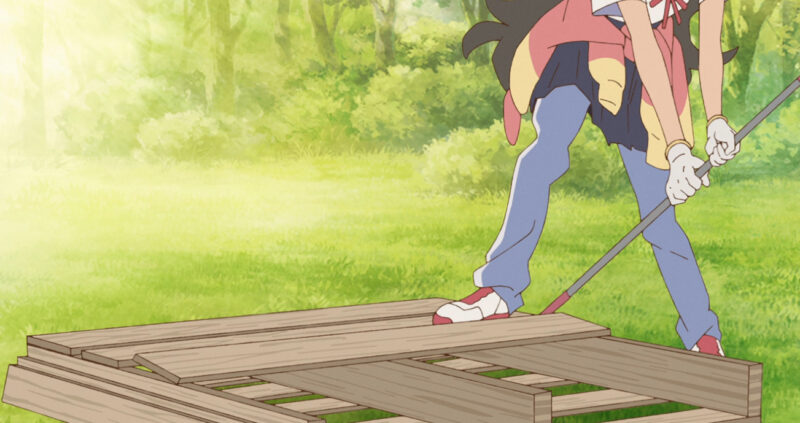
Speaking of adults, the club’s advisor Haruko plays a supportive role too. She’s always present to offer advice, but she mostly stays back to let the girls work out the difficulties for themselves. She doesn’t swoop in to directly help until the DIY girls exhausted all other possibilities. Her help acts as a push to get them over the difficulty and to allow the girls to finish the rest on their own. Contrast this to learned helplessness many kids have because of helicopter parents and teachers. The parents and teachers don’t allow kids to make mistakes and fail. Insulating them from this prevents the kids from learning. In fact, the parents and Haruko provide support but not solutions throughout the story. They wait to help when all other options are exhausted or when Serufu and the girls approach them for help. Haruko makes a single exception to this approach near the end of the series. She acts without the girls asking, but she waits until the “midnight of the soul” phase of the story. She plays the role of the wise counselor.
If you are into animation, I recommend you study how this anime handles its frames. The personality and fluidity of the movement comes from its simplified designs and use of frames. Do It Yourself! offers nice simplified animations and an uplifting, chill healing story.
